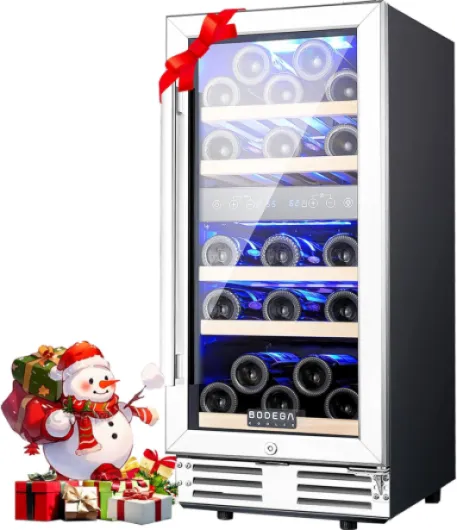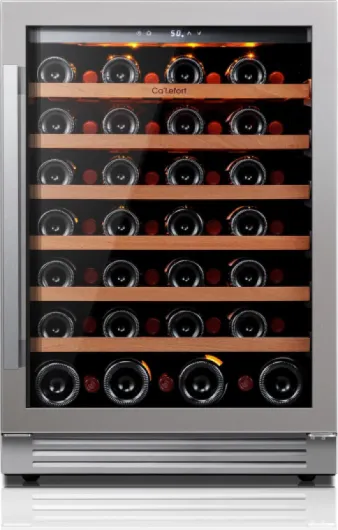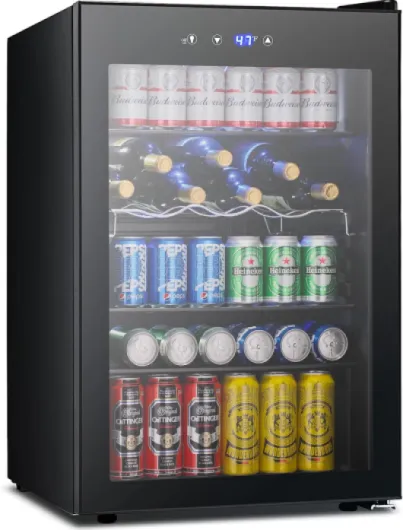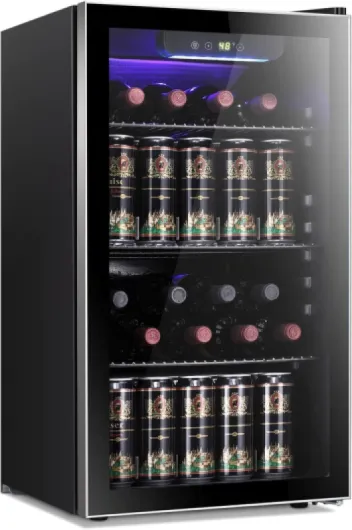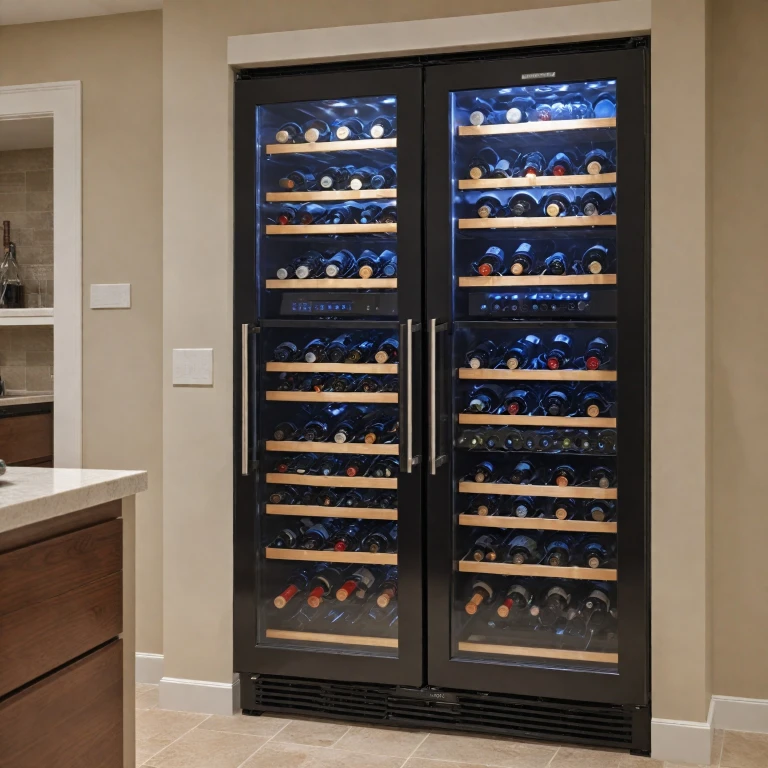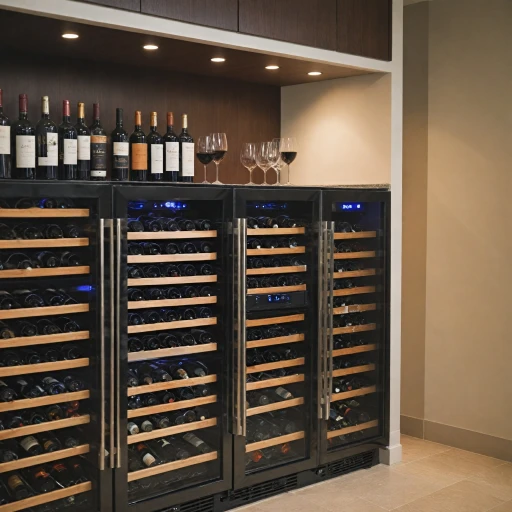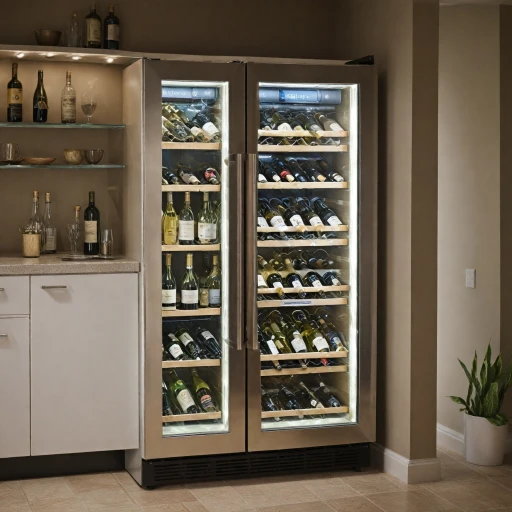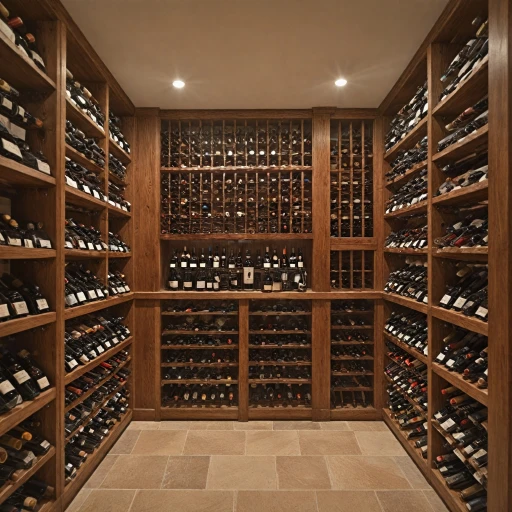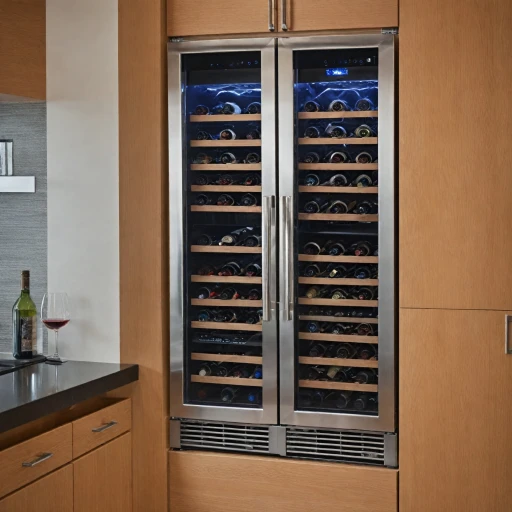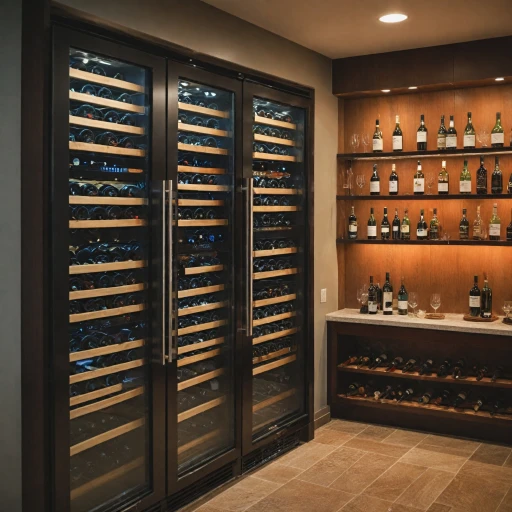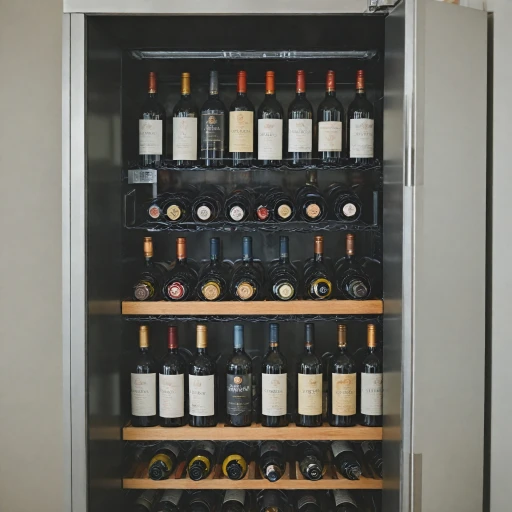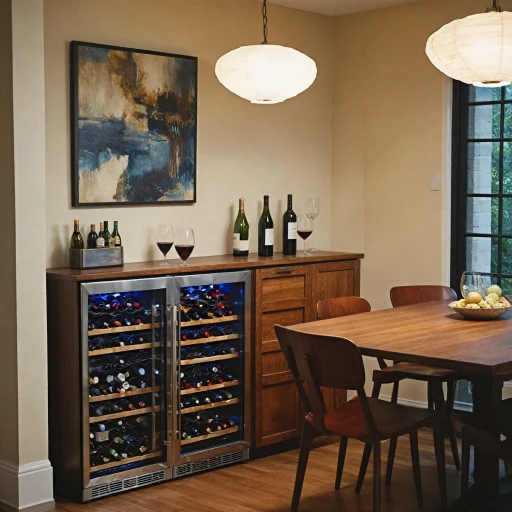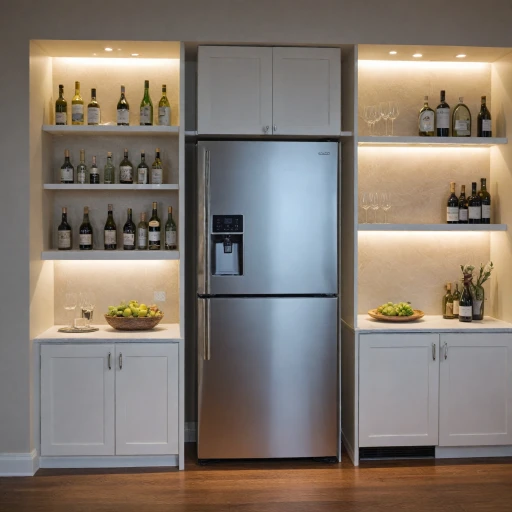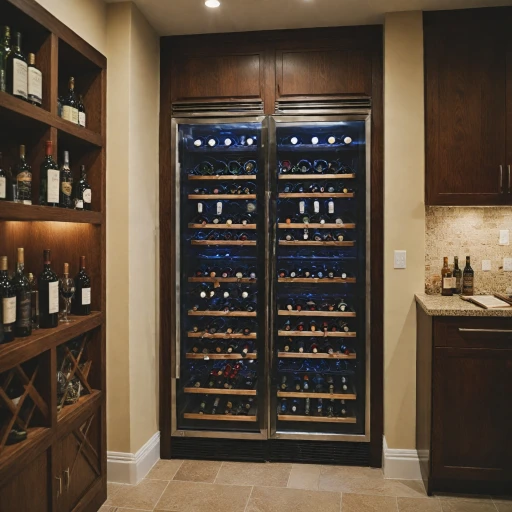
Understanding Wine Storage Basics
Grasping the Essentials of Wine Storage
When it comes to storing wine, understanding the basics is crucial for preserving the quality and flavor of your wines. The optimal temperature settings for your wine fridge play a significant role in maintaining the integrity of both red and white wines. While it might seem tempting to store your bottles at room temperature, this can lead to undesirable changes in taste and aroma.
Wine storage is not just about keeping your bottles cool; it's about finding the right balance. The best wine fridges are designed to maintain a consistent temperature, which is vital for long-term storage. Temperature fluctuations can be detrimental, causing the wine to expand and contract, which may lead to seepage or spoilage.
For those who are serious about their wine collection, investing in a wine cooler or a dual zone wine refrigerator can make a significant difference. These appliances allow you to set different temperatures for red and white wines, ensuring each is stored at its ideal serving temperature. This is particularly important if you plan to store your wines for an extended period.
In the following sections, we'll delve into the specific temperature needs of red versus white wines and explore how to choose the right wine fridge for your collection. Understanding these fundamentals will help you avoid common mistakes and enhance your overall wine experience.
Red vs. White: Temperature Differences
Temperature Variations Between Red and White Wines
When it comes to storing wine, understanding the optimal temperature for storing wine is crucial. Red and white wines have different temperature requirements, which can significantly impact their taste and aroma. Let's delve into these differences to ensure your wines are always served at their best.
Red Wine: Red wines are typically best stored at slightly warmer temperatures than their white counterparts. The ideal storage temperature for red wine is usually between 55°F and 65°F (13°C to 18°C). This range helps preserve the wine's complex flavors and aromas, ensuring that each bottle reaches its full potential when served.
White Wine: On the other hand, white wines benefit from cooler storage conditions. The recommended temperature for storing white wine is between 45°F and 50°F (7°C to 10°C). This cooler temperature helps maintain the wine's crispness and acidity, which are essential for a refreshing taste.
For those with a dual zone wine cooler, you can easily set different temperatures for red and white wines, ensuring each type is stored in its optimal environment. This is particularly useful if you enjoy both red and white wines and want to keep them in the same wine fridge.
Understanding these temperature differences is key to proper wine storage and serving. By setting your wine fridge to the appropriate temperatures, you can enhance the wine-drinking experience, whether you're enjoying a robust red or a delicate white.
The Impact of Temperature Fluctuations
Temperature Variability and Its Effects on Wine
Maintaining consistent temperature in your wine cooler is critical to preserving the integrity of your wines. When temperature in the fridge fluctuates, it can lead to significant changes in the wine’s chemical composition, affecting taste and quality. These fluctuations can occur due to frequent opening of the wine refrigerator or improper fridge temperature settings.
For optimal wine storage, it is crucial to set your wine fridge to the appropriate temperature zone for the type of wine you want to store. Red and white wines have different storage needs. A dual zone wine fridge can be a great solution, allowing you to store red and white wines at their ideal temperatures. Understanding the allure of red-tinted wine glasses might enhance the way you perceive these variations.
When wines are exposed to fluctuating conditions, the risk of spoilage increases, particularly for long term storage. It is advised to check the temperature settings and monitor the operating conditions of your wine refrigerator regularly. This will ensure your bottles are kept at a stable, cooler temperature, enhancing their longevity and the immediate taste experience when they are served at the best serving temperature.
Choosing the Right Wine Fridge
Deciding on Your Ideal Wine Cooler
When it comes to choosing the right wine fridge, understanding the balance between functionality and your specific wine needs is key. Different types of wine require different storage considerations, and so does your personal collection strategy. Here are some factors to consider:- Capacity: The number of bottles you need to store will determine the size of the fridge. Whether you're storing a small collection of whites or an extensive assortment of reds and whites, room for expansion should be factored in.
- Temperature Zones: Single-zone wine fridges are suitable for storing one type of wine, while dual-zone models offer flexibility, allowing for separate temperature settings suitable for your reds and whites. This is critical if your wine concerns include both serving temperature and long-term storage.
- Type of Wine Storage: Consider if you’ll need a fridge that maintains different cooler temperatures for ready-to-serve versus long-term storage. Styles may vary, some designed for room temperature serving and others for optimal preservation temperatures.
- Features: Modern wine fridges come equipped with various features such as humidity control, UV-protected glass doors, and digital temperature displays to ensure the best conditions for your wines.
- Space and Aesthetics: Your fridge should fit well into your chosen space at home. Look for models that complement your home decor and make the aesthetic statement you wish to convey.
Adjusting Settings for Different Wine Types
Tailoring Your Wine Fridge for Diverse Wines
When adjusting your wine fridge settings for various wine types, understanding each wine's optimal serving temperature is crucial. Both red wine and white wine have specific needs that can be effectively managed with a well-configured cooler.
Red Wine Considerations: Red wines are often best served at temperatures slightly below room temperature. Ideally, a wine refrigerator dedicated to reds should be set between 55°F and 65°F. This range ensures the complex flavors and aromas are preserved, enhancing your tasting experience. Dual zone wine fridges are particularly beneficial for those who want to store both reds and whites without compromising on flavor and aroma.
White Wine Preferences: On the cooler end of the spectrum, white wines thrive at lower temperatures. Setting your wine cooler between 45°F and 55°F will maintain the crispness and vibrancy typical of white wines. This cooler temperature helps in retaining the brightness that makes a chilled white wine refreshing and delightful.
Accommodating Sparkling and Sweet Wines: Don't forget about the sparkling and dessert wines which also require specific conditions. For these varieties, a colder setting, closer to 40°F, will preserve their effervescence and sweetness, offering a delightful serving experience.
Customizing for Long Term Storage: If your goal is long term storage, a consistent cooler temperature is crucial, irrespective of the wine type. Maintaining a stable environment between 55°F and 58°F works well for storing both red and white bottles, ensuring the wine ages gracefully.
Knowing how to set your wine fridge for different kinds of wines allows you to enjoy them at their best, while also extending their term storage life. Whether using a single-zone or a multi-zone wine refrigerator, the right adjustments to cooler settings will elevate your wine storage and serving practices.
Common Mistakes and How to Avoid Them
Common Temperature Mistakes to Sidestep
In the pursuit of perfect wine storage, temperature mistakes can lead to less-than-ideal tasting experiences. Here are some common pitfalls to avoid to ensure your wine fridge serves its purpose:- Setting It and Forgetting It: Many wine enthusiasts assume once their wine fridge is set, they’re good for the long term. However, regularly checking and adjusting the temperature according to the type of wine you're storing is essential. Over time, the balance can shift due to varying external conditions, impacting the overall flavor of your wine collection.
- Ignoring the Dual Zone Advantage: If you own a dual zone wine fridge and don't utilize this feature correctly, you're missing out on optimal wine storage. Customize each zone to cater to both red and white wines, as they require different serving temperatures. For instance, red wines usually perform best in a warmer zone compared to whites.
- Overloading the Wine Fridge: Maximizing the storage capacity of your wine fridge can seem appealing, but overcrowding restricts airflow, leading to inconsistent temperature regulation across the bottles. Leave some room for proper air circulation, ensuring every wine bottle is kept at its best.
- Fluctuating With Room Temperature: Placing your wine fridge in a location exposed to frequent temperature changes, like near a window or a heat source, poses risks. Ambient room temperature can drastically affect the cooler temperature inside your wine fridge over time. Ensure your wine cooler is situated in a stable environment.
- Serving Directly From the Fridge: Serving wine straight from the wine refrigerator might cause temperature shock to your wines. Allow your bottles to rest at room temperature for a bit before pouring, especially with red wines, which are often best when served slightly warmer than their storage temperature.

